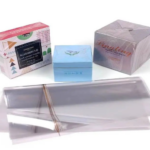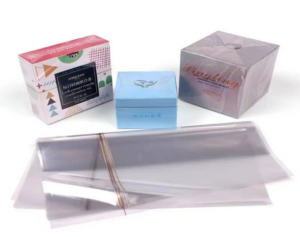Biaxially oriented polypropylene (BOPP) sticky tape films have been a hidden gem in the contemporary industrial tapestry, completely changing the game regarding packaging, transport, and material security. Modern industry would not be what it is today without the development of BOPP adhesive tape films in China Bopp adhesive tape film manufacturers, have played a pivotal role in improving product integrity and simplifying packaging operations. Let’s explore their history, uses, and the crucial part they play in many fields.
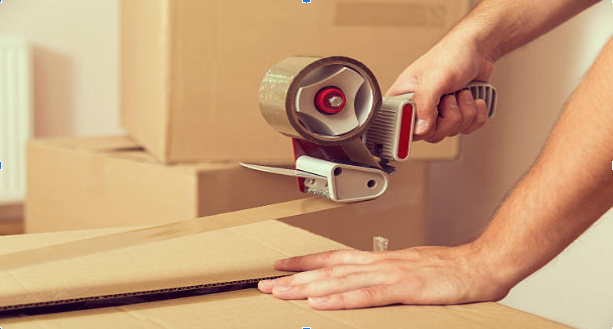
Learning About BOPP Adhesive Tape
- The Benefits of BOPP
Biaxial orientation improves the mechanical and optical characteristics of BOPP, a thermoplastic polymer that is both flexible and long-lasting. It is the perfect substrate for adhesive tapes used in many industries due to its high printability, natural strength, clarity, and moisture resistance.
- Technologies for Adhesive
The success of BOPP sticky tape films is mainly attributable to the development of better adhesives. The versatility of these films has been enhanced by introducing new adhesive formulations that address unique needs, such as resistance to heat, strength of adhesion, and compatibility with different surfaces. These formulations include rubber-based adhesives as well as acrylics.
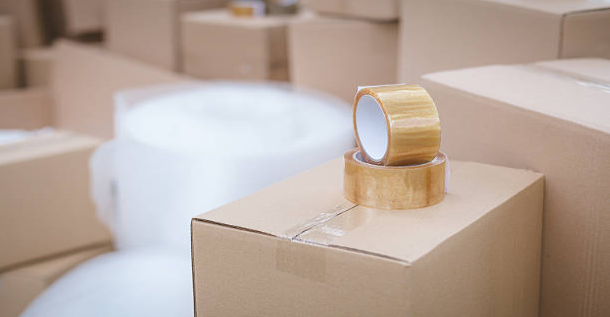
The Development of BOPP Adhesive Films over Time
- Initial Concepts and Uses
Initially used for packing and sealing, BOPP sticky tape films have been used since the middle of the twentieth century. In its early stages, the primary goal was to provide a reliable method of securely fastening goods and boxes.
- Performance Enhancements
The sticky tape films made of BOPP from China Bopp film suppliers have come a long way thanks to developments in technology and improvements in production methods; beyond conventional packaging, sectors including healthcare, construction, electronics, and automobiles have found uses for them because of their improved tear resistance, higher adaptability, and enhanced stickiness.
Implementations in Various Sectors
- Logistics and Packaging
BOPP adhesive tape films have revolutionized packaging procedures with dependable and secure sealing solutions. Its capacity to tolerate different temperatures, moisture, and stress guarantees the product’s integrity and minor damage during transportation. This contributes to effective logistics and supply chain management.
- Material for Construction and Buildings
You won’t find bonding and sealing products more vital than these tapes in the construction industry. Applications such as insulation, vapor barriers, and connecting building materials benefit significantly from their strength, weather resilience, and ability to cling to various surfaces.
- Vehicles and Electrical Devices
BOPP adhesive tapes are essential in the electronics and automobile sectors. Because of their dielectric qualities, they are used as insulators and bonding solutions for internal components, cable harnessing, and surface protection during manufacture.
- Medical and Healthcare Use Cases
Medical device assembly, wound care, surgical drapes, and anchoring bandages are some of the healthcare domain’s many uses for BOPP adhesive tapes. They are ideal for use on delicate skin due to their hypoallergenic characteristics and mild adhesiveness.
Creativity and Long-Term Planning
- Eco-Friendly Behaviors
More and more people are concerned about the environment. Thus, researchers are working on making BOPP adhesive tape films that are less harmful. Efforts to lessen the environmental effect without sacrificing effectiveness have prompted innovations in adhesive compositions and recyclable materials.
- Superior Features
The incorporation of sophisticated functionality into BOPP adhesive tape films in the future is an exciting prospect. This category includes innovative adhesive technologies with temperature-sensing capabilities, tamper-evident characteristics, and anti-counterfeiting techniques.
- The Effects of Adhesive Tapes on the Environment
Modern packaging would only be complete with adhesive tapes, which secure items, facilitate transportation, and increase convenience. Concerns about sustainability have, however, brought attention to the environmental consequences of these harmless recordings. To find better ecological packaging solutions, we must know how sticky tapes affect it.
Adhesive Tapes: A Life Cycle Analysis
- Parts Used in Production and Raw Materials
Typical components of adhesive tapes are a release liner, adhesive, and a backing material (paper, polypropylene, etc.). Raw ingredients, sticky chemical compositions, and energy-intensive manufacturing processes are all part of the production process.
- Operation and Elimination
The effects of adhesive tapes on the environment vary depending on their use. Many cassettes are made for one-time usage, which causes much waste. The amount of damage that tapes do to the environment heavily depends on their disposal methods, including recycling rates and landfill placement.
Issues Relating to the Environment
- Producing Garbage
Disposing of non-biodegradable trash is a significant issue regarding adhesive tapes and the environment. The inappropriate disposal of tapes might lead to their buildup in landfills and their prolonged environmental persistence.
- Obstacles in Recycling
The actual recyclability of sure adhesive tapes is problematic, even if they are recyclable in theory. Many of these items aren’t appropriate for regular recycling streams because of the complicated separation and recycling processes caused by the mixture of components, such as plastic backing with adhesives.
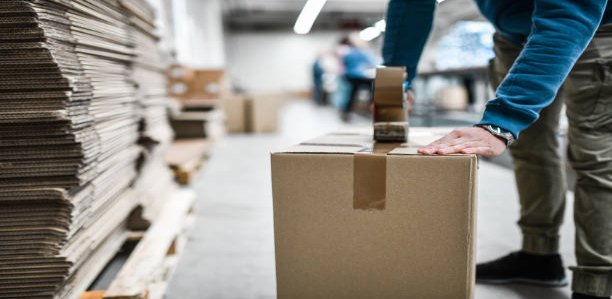
- The Impact of Raw Materials on the Environment
Beyond tape, the environmental impact is significant. Extraction and processing of raw materials and energy-intensive industrial operations deplete resources, use energy, and emit carbon.
Eco-Friendly Resolutions
- Biodegradable and Recyclable Options
Making tape that can be recycled or biodegraded is one of the goals of recent innovations in the industry. Tapes less harmful to the environment during their natural decomposition or recycling process are being developed via innovations in adhesive formulations and materials.
- Solutions for Minimized Waste
Making tapes that can be reused or easily removed with little residue may help decrease waste. This allows for recycling or reapplication of the tape without damaging the surface.
- Environmentally Friendly Packaging Methods
When considering packaging, it’s essential to evaluate the adhesive tapes’ entire design, materials, and end-of-life effect to incorporate them into eco-conscious packaging methods and reduce environmental impact.
Customer Insight and Accountability
- Informing Buyers
Making people more aware of the availability of eco-friendly alternatives, correct disposal techniques, and responsible tape use might inspire them to make more eco-conscious decisions.
- Consumption with Conscience
It is prompting conscientious consumption by recommending eco-friendly products, going for reusable or recyclable alternatives, and buying from businesses that share our values of sustainability.
Discussion
The development of BOPP adhesive tape films shows how contemporary industries adapt and innovate. These films’ packaging roots have led to extensive use across sectors, improving supply chain efficiency, product integrity, and safety. As technology advances and sustainability becomes more critical, BOPP adhesive tape sheets will likely enhance functionality, reduce environmental impact, and meet industrial demands.
Industries, manufacturers, consumers, and regulators must work together to address adhesive tapes’ environmental effects. Sustainable solutions need material innovation, ethical consumption, and a shared commitment to environmental protection. Developing eco-friendly adhesive tapes is crucial to eco-friendly packaging solutions as sustainability gains momentum. Innovation, education, and conscious consumption may help reduce packaging materials’ environmental impact by making adhesive tapes sustainable.

